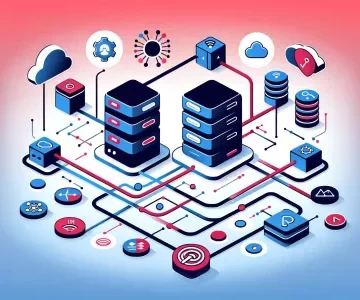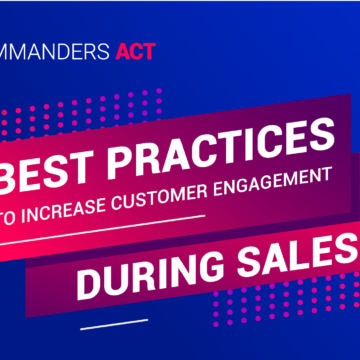Cookieless: why you should invest in first-party tracking
06/11/2023 |


Cookielessness – the end of third-party cookies – is encouraging brands to turn to first-party tracking. With very tangible benefits in store.
Do you prefer third-party or first-party cookies? I don’t really have a choice any more”, you might reply, given the news that third-party cookies are gradually being squeezed out. In fact, everything is converging to make cookieless a reality in the short term. Just look at :
- from Apple, whose Intelligent Tracking Protection (ITP) technology embedded in Safari represents a veritable shield against third-party cookies
- Google, which, after several postponements, this time seems determined to remove third-party cookies from Chrome (65% market share worldwide across all media) by mid-2024.
Not forgetting the GDPR, which requires users’ consent to be obtained before most cookies are authorised.
So that’s what cookieless is all about: a digital world that has to learn to function without these trackers, which until now have been regarded as the basic ingredient in every marketing recipe. So, yes, as it becomes increasingly difficult to rely on third-party cookies and the third-party data they generate, brands are automatically turning to so-called first-party data. Or at least trying to.
According to a survey of 400 marketing managers, 77% of them think that the end of third-party cookies will penalise their business – 26% even anticipate major damage. And 53% intend to speed up their preparations for cookieless, or even make it their top priority.
The focus is therefore on a data strategy that is less dependent on third-party cookies. That’s why the subject of first-party data collection is such an important part of the roadmap. First-party data is data that you do not have to rent or buy, because it is collected from your own contact points and with the consent of users. For example, data from :
- your website and social networks
- surveys and polls administered by you
- loyalty programmes
- customer feedback forms
- your emailings and newsletters
- of your CRM
Brands that have already embarked on this transition are confirming, with results to back them up, that there are good reasons to be proactive on the subject of first-party tracking. Here’s an overview.
Reason #1: Maintain long-term customer knowledge

Collect more data from direct interactions with customers and prospects. And more qualitative data too. That’s what first-party tracking is all about. That’s why it’s part of a mindset that relies on a direct relationship with the audience, and therefore on the transparency of data collection and its purposes. The stronger the relationship of trust, the more the audience agrees to entrust the brand with data, and the higher the quality of that data.
For brands that have got into the habit of conversing regularly with their audience (by proactively informing them of both good and bad news, by regularly asking for feedback), first-party data collection represents a high-potential source of customer knowledge. For the others, it’s far from too late. We just need to bear in mind that first-party data collection is not just a technical choice; it is based on a relationship of trust with audiences that is built up over time.
Reason #2: Feed activations with reliable data

Compared with data collected via third-party cookies, first-party data has one major advantage: brands have control over it. They know where it comes from and the context in which it was collected. They know how complete it is and how fresh it is. In other words, brands know enough about this data to deduce what they can and cannot do with it. There’s no fooling around here.
The result? When the time comes to use this data to set activation parameters, or to enrich it with other data, the actions are much more effective. Because data collection is controlled, everything that follows – processing and activation – can be controlled.
Reason #3: Enrich data to better personalise customer relations

Collected directly from the audience, with clear ground rules, this data can be combined with others. First and foremost, with CRM information. This helps to build a 360 view of the customer, from in-store purchases to website visits, via responses to a survey sent out in a newsletter. It also provides every stage in the customer lifecycle with the most contextual data possible, from acquisition to retention and, if necessary, win-back.
By combining this data, the brand gains the ability to contextualize and even personalize its customer communications. For example, it can send out reminders if the rate of purchases seems to be slowing down, or if there are signs that the relationship is coming to an end (consultation of cancellation conditions and lack of contact with the branch). This triggers direct communication actions (by email, call centre, etc.) to maintain Customer Lifetime Value (CLV).
Reason #4: Gaining data sovereignty

Greater reliance on first-party data also means greater sovereignty. In other words, becoming less dependent on third-party suppliers to feed and maintain customer knowledge. This is no mean feat at a time when regulatory pressure means that available, compliant data is becoming rarer, and therefore more expensive.
This sovereignty is also a way of gaining greater control over data collection compliance and avoiding any nasty surprises. A powerful argument at a time when failure to comply with the RGPD quickly makes headlines.
Reason #5: Improve campaign performance

Because it is fully controlled, first-party data is the basis for both setting up campaigns and measuring their performance. Set parameters, by using this data to deduce targeting. Measuring, by having a front-row seat to observe the impact of these campaigns on the contact points mobilised.
So it’s hardly surprising that the surveys conducted during the Commanders Act webinar reveal that 40% of listeners are interested in first-party data collection as a way of gathering more data and… to increase the ROI of their campaigns. The prospect of benefiting from data that is by its very nature non-intermediated, with minimised management and bias, is of great interest to brands. And this is encouraging them to opt for first-party data on a voluntary and committed basis.
FAQ : Third-party or First-party cookies and the Cookieless World
1. What is a “cookieless” world?
It’s a digital world where we operate without trackers, such as third-party cookies, that were once considered essential in marketing.
2. What is Apple’s and Google’s position on third-party cookies?
Apple has developed a technology called Intelligent Tracking Protection (ITP) for Safari, which acts as a shield against third-party cookies. Google plans to remove third-party cookies from Chrome by mid-2024.
3. How does the RGPD affect the use of cookies?
The RGPD requires the collection of user consents before allowing most cookies.
4. Why are brands turning to first-party data?
Due to increasing restrictions on third-party cookies, brands are looking to leverage first-party data, which is collected directly from their own touchpoints.
5. What are examples of first-party data?
It comes from sources such as your website, social accounts, surveys, loyalty programs, feedback forms, emailings, newsletters and CRM.
6. What are the benefits of first-party tracking?
Benefits include better customer knowledge, more reliable data for activation, personalization of customer relations, data sovereignty and improved campaign performance.
7. Why is trust crucial to first-party data collection?
A strong relationship of trust with the audience leads to better quality data collection, as users are more inclined to share information with brands they trust.
8. How can first-party data improve customer personalization?
By combining first-party data with other information, such as CRM data, brands can better contextualize and personalize their communications, improving customer lifetime value.
9. What do we mean by “data sovereignty”?
It means becoming less dependent on third-party suppliers for data collection, and having total control over how data is collected and used.
10. How does first-party data affect campaign performance?
First-party data, being fully controlled, can help to better target and measure campaign performance, leading to improved ROI.











